Best Tile Cutter: Manual vs Electric
Which is the best tile cutter? Manual tile cutter or electric tile cutters? These are the two best tile cutting tools for tile fixers. But which you should choose depends on the specific job at hand, the materials you’re cutting, and the space to work on. That’s why today, we’re bringing you our guide for choosing the best tile cutter for your project. When it comes to the great manual vs electric tile cutter debate, we’re here to help. Let’s get started.
Let’s paint a picture. You’re replacing the splashback in your kitchen. Or maybe tiling the bathroom floor. But your tiles just won’t line up. After an hour of frustration and a few choice words, you’re ready to call in the professionals. Good move, right?
Stop right there. Tile cutting isn’t difficult. Just because you’re a DIYer doesn’t mean you should shy away from cutting some tiles. It all comes down to choosing the right tool for the job.
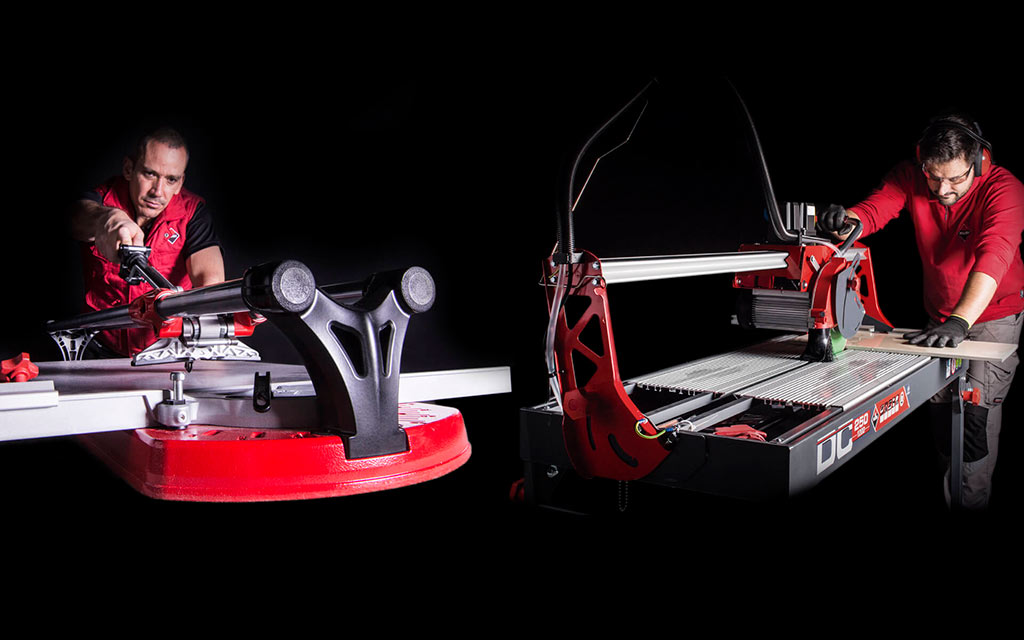
Mục Lục
What Tile?
Tiles comes in many different varieties. Ceramic tiles, clay tiles, and porcelain tiles are the tiles you’ll commonly see at the store. Though these three types only scratch the proverbial tile surface.
Ceramic tiles are made from sand, water, and clay. The materials are molded into a square and then baked in a kiln to remove moisture. Porcelain tiles are made from a denser type of clay than ceramic tile. Clay tiles are entirely clay. Ceramic, porcelain, and clay tiles are either glazed for inside use or unglazed for roofing.
Tile types such as glass, cork, concrete, and natural stone are used for any number of other applications. There’s no rule dictating which tile you can or can’t use for a project. Though some tiles hold up better in certain environments.
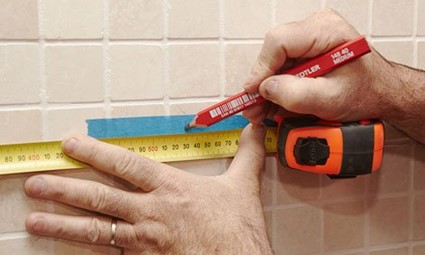
Measuring the area to be tiled
Every project comes with unique spatial challenges. Sometimes you need more tiles, sometimes less, and other times you need to cut tiles.
Accurately measuring the area to be tiled is imperative for choosing the correct amount of tiles for your project. Measure the entire areas boundaries, diagonal interiors, width, and height. Next, measure one square of sample tile. Use those numbers to calculate how many tiles you’ll need for your entire project.
Don’t forget to account for abnormal boundaries. Order extra tiles to allow for wastage due to cuts and breakages. 10% extra is usually recommended for this.
Cutting Tiles
Chances are almost certain you’re not working with perfectly straight boundaries that are a multiple of your tile size. Cutting the tiles is the only way to make most projects work.
Your two best tile cutters are manual tile cutters and electric tile cutters. Manual tile cutters generally take less time to cut a tile, are more convenient and easier to use but are limited to straight cuts only. Electric tile cutters take more time to cut a tile, require more skill to use but can cut all of the cuts required on a job.
Each is readily available from RUBI stockists. Which you should choose is an entirely different story. Ready to learn the difference between manual and electric tile cutters? Let’s get started.
Manual Tile Cutters
Everyone should have manual tile cutters in their toolbox. The cutters look somewhat like a car jack with a bar that runs from top to bottom. Tiles get placed inside the cutters and scored. The tiles break along the scored line.
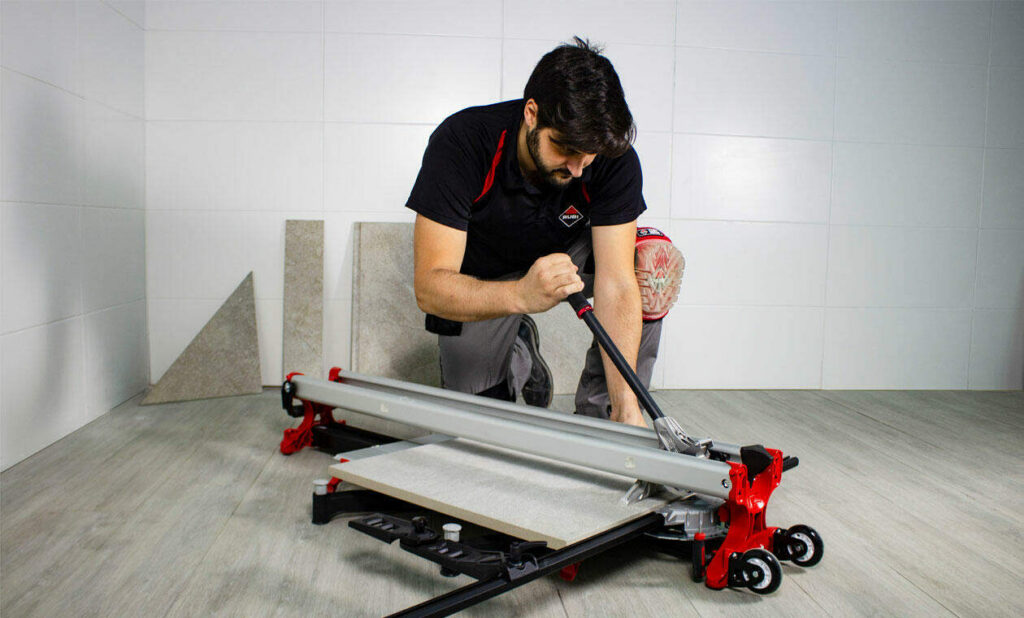
Tile cutters by nature, are easier to set up and use than electric tile cutters. You need to place the tile in the cutter, score the tile, and then use the breaker which will snap the tile along the score.
- Some harder porcelain tiles can be difficult to score and cut so we would recommend using an extreme or endure scoring wheel which tends to cut deeper into the surface of the tile, allowing for an easy and accurate cut.
- With ceramic tiles a harder or deeper score can cause damage to the delicate glaze on the tile so we would recommend a lighter score with a 6mm or 8mm scoring wheel.
There is a trick to scoring glass and that is to score lightly with a 6mm scoring wheel because putting too much pressure on the tile when you score can cause it to crack or give it a jagged edge. As you can see, breaking tiles along the score isn’t always easy. Sometimes the manual tile cutter won’t score deep enough. Other times the tile has a lot of internal tension and doesn’t want to break accurately. Expect to fight with more than a few tiles.
However, manual tile cutters have some serious benefits. They’re cheaper than electric tile cutters, portable, and operation doesn’t take intricate skill. (Though you do need skill to line up your tiles.)
Manual tile cutters work best for small kitchen splashbacks, projects with a lot of straight cuts and projects where use of an electric tile cutter is unsuitable due to space/area limitations.
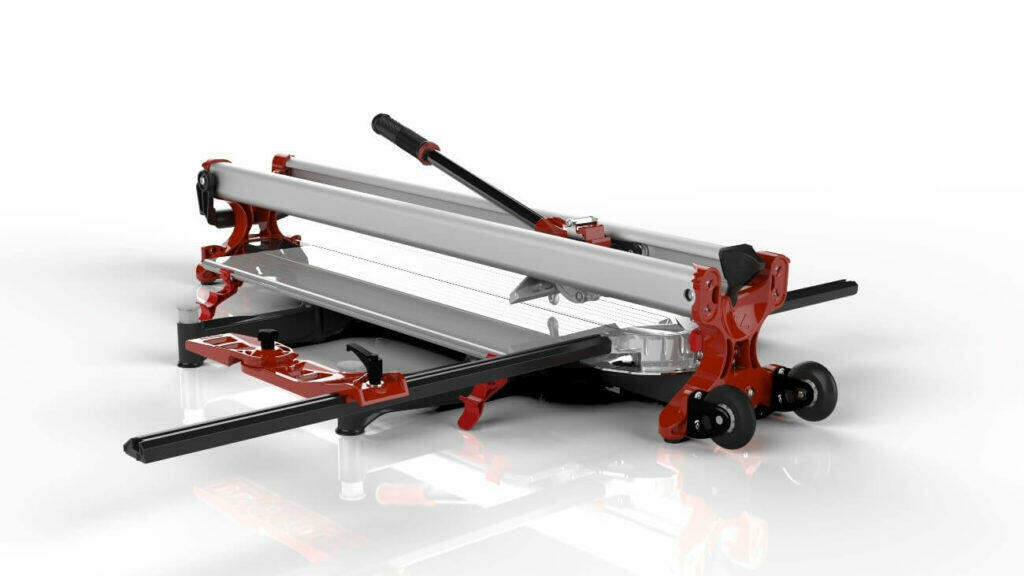
Our website lists a number of different manual tile cutters. We carry different sizes made to accommodate any type of project. We also sell the maintenance materials, like lubrication, to keep your cutter smoothly working and a full range of different scoring wheels.
Electric tile cutters
Electric tile cutters are best for projects where your manual tile cutters just aren’t cutting it (literally). At first glance, an electric cutter looks like a table saw. A rotating diamond blade cuts the tile while a guide keeps your tile straight.
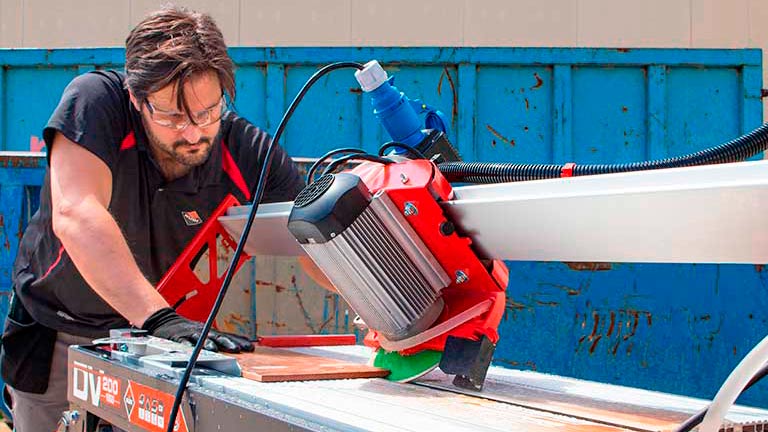
Water sprays from around the cutting blade to ensure the tile doesn’t smoke and burn and the diamond blade remains cool. Some tables come with a water reservoir while others can connect to a water source.
Electric tile cutters cut tiles extremely straight. The guide helps make accurate cuts. With some skill, you can also cut tiles into intricate shapes. While manual tile cutters can only cut straight, an electric tile cutter can create L-shaped and U-shaped cuts and cut inserts (for sockets etc).
Electric tile cutters can also easily cut harder tile materials. The diamond blade can cut the hardest varieties of tile. The electric tile cutter is a must if you are cutting natural stone tiles or wish to mitre your tiles for external corners.
Compared to manual tile cutters, electric tile cutters are best for large projects. You can cut all types of tiles and types of cuts and with more precision than manual tile cutters. The only price to pay is the set up and preparation of the working area. Because of the water used in cooling the diamond blades there are some limitations in where you can set up.
Skill and size are the wet saw’s main drawback. The units are typically large and take time to learn how to set them up properly. We must stress that you need to understand safety procedures before getting started. Please practice using a moving saw to cut straight lines and get familiar with the pressure and movement.
Buying an electric tile cutter comes down to understanding what you need. Different saws come equipped for different jobs. Some factors are the size of the tiles you are cutting and picking the correct diamond blade for the material.
Decide what’s the best tile cutter for you
The guide above should serve as a good start in the debate. Material, project size, and skill all factor into your choice. However, the best choice for your project isn’t always straightforward.
Sometimes money, time frame, tile type, and more can all influence which tool to choose. If you’re short on time, do you really have the luxury of ordering an expensive electric cutter?
That’s where we’d like to help. Our experts would love to hear all about your project and help you decide between an electric and manual tile cutter. We’ll take the time to ensure you’re buying the best tile cutter for the job.
If you’re planning on tiling often, it might make sense to buy both. You’re likely to run across situations where you’ll need each tool. It’s always best to have the proper tool for the job.
So if you’re ready to get started on your tiling project, get in touch with us. We can help you choose the best tile cutter for your project.















![Toni Kroos là ai? [ sự thật về tiểu sử đầy đủ Toni Kroos ]](https://evbn.org/wp-content/uploads/New-Project-6635-1671934592.jpg)


